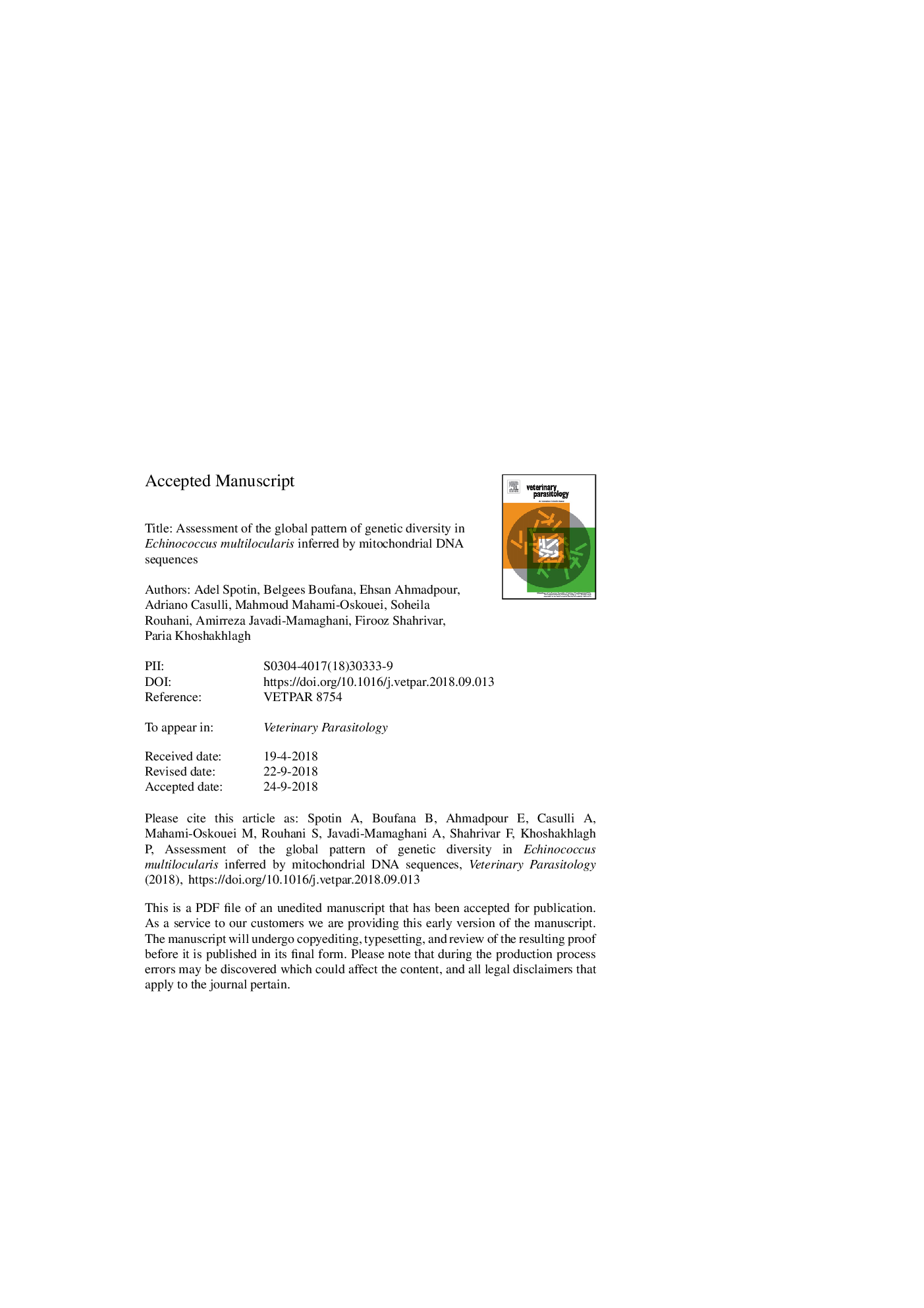| کد مقاله | کد نشریه | سال انتشار | مقاله انگلیسی | نسخه تمام متن |
|---|---|---|---|---|
| 11025810 | 1666512 | 2018 | 34 صفحه PDF | دانلود رایگان |
عنوان انگلیسی مقاله ISI
Assessment of the global pattern of genetic diversity in Echinococcus multilocularis inferred by mitochondrial DNA sequences
دانلود مقاله + سفارش ترجمه
دانلود مقاله ISI انگلیسی
رایگان برای ایرانیان
کلمات کلیدی
موضوعات مرتبط
علوم زیستی و بیوفناوری
علوم کشاورزی و بیولوژیک
علوم دامی و جانورشناسی
پیش نمایش صفحه اول مقاله

چکیده انگلیسی
The aim of this review was to assess our current knowledge on phylogeography and global genetic structure of Echinococcus multilocularis populations originating from rodents, wild canid hosts, and human. Six bibliographic databases were searched from 1990 to 2017, identifying a total of 110 publications. The cytochrome c oxidase subunit 1 (cox1) and cytochrome b (cytb) sequences of E. multilocularis from Asia, Europe, and North Americas were analyzed to estimate the diversity and neutrality indices, and genetic differentiation. A total of 69 (cox1, 36.7%) and 16 haplotypes (cytb, 19.2%) were grouped into various geographical clades. A parsimonious haplotype network demonstrated a star-like feature with haplo-groups Em2 (Asia: 36%), Em105 (Eastern Tibetan plateau: 4.8%), Em46 (Europe: 9.1%), Em73, (Europe: 2.7%) and Em92 (North Americas: 4.3%) as the most common haplotypes. A relatively high level of genetic diversity was detected in rodent-derived E. multilocularis isolates (Haplotype diversity: 0.944), wild canids (Hd: 0.912), and human origin (Hd: 0.704). The highest number of haplotypes (nâ=â59) and the highest haplotype diversity (0.969) were identified in the Asian and European populations, respectively. Cladistic phylogenetic tree indicated the European clade has a sister relationship with the Asian clade. However, some North American haplotypes were assigned to the European clade together with haplotypes from Poland. The statistically significant Fst values indicated that E. multilocularis populations of Asian-European, Asian-North American, and European-North American origins were genetically differentiated (Fst: 0.22624 to 0.43059). An occurrence of distinct parasite populations suggests that E. multilocularis derived from glacial refugia have been plausibly sustained by indigenous hosts during the Pleistocene Epoch.
ناشر
Database: Elsevier - ScienceDirect (ساینس دایرکت)
Journal: Veterinary Parasitology - Volume 262, 15 October 2018, Pages 30-41
Journal: Veterinary Parasitology - Volume 262, 15 October 2018, Pages 30-41
نویسندگان
Adel Spotin, Belgees Boufana, Ehsan Ahmadpour, Adriano Casulli, Mahmoud Mahami-Oskouei, Soheila Rouhani, Amirreza Javadi-Mamaghani, Firooz Shahrivar, Paria Khoshakhlagh,